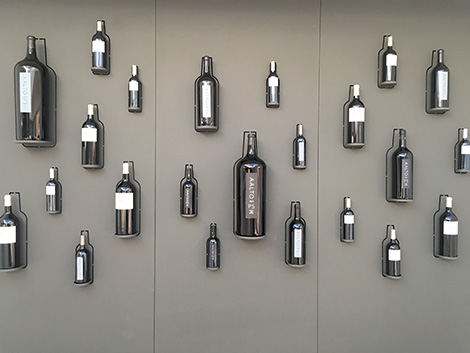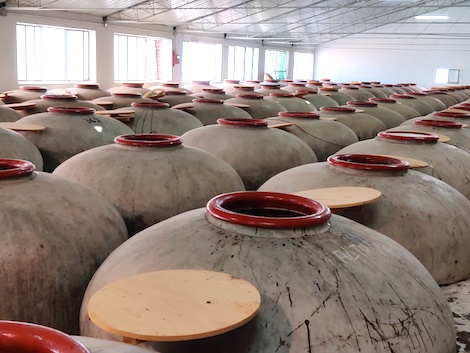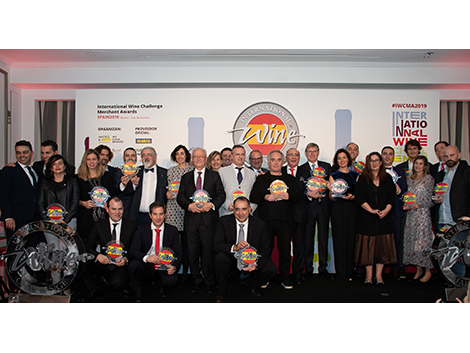
The first time I tried a wide selection of village wines from Ribera del Duero was at a tasting organized by Bodegas Aalto. They presented the different ingredients behind the wine and invited attendants to do their own blend. It was great fun to play winemaker for a while, but the real treat was to have access to a variety of flavours within a large appellation at a time when land classification was not the big issue it is today in Spain and scores (preferably Parker’s) were the fastest path to success.
La Horra and its satellites
I repeated the experience with winemaker Antonio “Toño” Moral a few weeks ago. We tasted several barrel samples of the 2018 and 2017 vintages at the state-of-the-art, recently refurbished winery in Quintanilla de Arriba (Valladolid). The villages on this occasion were Baños de Valdearados, Gumiel, Moradillo, Piñel de Arriba, Valbuena, La Aguilera, La Horra and a blend of Fresnillo, Fuentespina and Fuentelcésped which they refer to as “the three Fs.” All of them are in the province of Burgos, in the central part of the DO, except for Valbuena and Piñel de Arriba which lie further west in Valladolid.
Interestingly, I experienced similar impressions, particularly in the wines from La Horra. As soon as I put my nose in the glass, I felt fully ripe fruit with hints of dark chocolate which are the trademarks of Aalto. On the palate, the structure that is usually found in the wines from this village was perfectly wrapped by a soft, voluptuous texture. Isn’t this mix of opulence and balance one of the keys to Aalto’s success?
The rest of the villages also add their bit: the chalky character of the limestone soils of Valbuena, weight and middle palate (Gumiel), firm tannins and minerality (Baños de Valdearados), fruit (Fresnillo and the other Fs), ripeness, structure and freshness (Moradillo)… The most distinctive wine outside La Horra was a 2018 fine, juicy sample from La Aguilera showing amazing tension. The style was not what one usually expects from Aalto, but it helped to understand the balancing act behind the blend and the fact that the brand can attract aficionados who are no longer satisfied with just a powerful red aged in expensive barrels but also demand depth and finesse in their glass.
This is obvious in the 2017 vintage now on release. Despite a 30% reduction in yields due to frost, they have stuck to their distinctive, voluptuous style rather than searching for concentration. Whereas Aalto is a medium-bodied red with tension, finesse and good freshness, Aalto PS feels more powerful and complex with dark chocolate flavours and notable depth.
Even if current visitors may not get this impression, grapes and winemaking have been the focus at Aalto in the past. Manager Eduardo Ferrín recalls that when the winery was built in 2005, “luxuries were left aside” and most of the investment went to winemaking. The winery was refurbished between 2015 and 2017 in order to “have premises in line with the prestige of the brand, be ready to welcome [almost exclusively professionals] visitors and work comfortably,” Ferrín explains.
Solid as a rock
The approach was very clear from the beginning. When Aalto was established in 1999, Ribera del Duero was riding high. The brand’s two promoters knew the area well and brought invaluable experience to the company. Mariano García, winemaker at Vega Sicilia for 30 years (1968-1989), had also established a reputation with Mauro, a wine which wasn’t part of any DO but rubbed shoulders with top Riberas. Javier Zaccagnini, an engineer with experience in the automotive sector, had turned his career towards wine and managed Ribera del Duero’s Regulatory Board for six years.
The dream team quickly drew the attention of investors. The first were several executives at software company Meta4 who were soon joined by Osborne, a big player in the Spanish wine scene. In 2006 two families whose business interests included wine replaced them: the Masaveu family, owners of Murúa in Rioja, Fillaboa in Rías Baixas, Leda in Castilla y Léon and Pagos de Araiz in Navarra, and the Nozaleda family, who is behind Enate in DO Somontano.
Financial stability has never been a problem at Aalto. Changes in the company’s ownership or management (Javier Zaccagnini left in 2018 to devote himself to making his own wines) have not had any effect on the status or reputation of the wine on the market. Mariano García oversees the vineyards, the evolution of the wines and visits the winery on a weekly basis, but there is a solid technical team headed by Antonio Moral.
Despite the brouhaha generated by the name -Aalto had two “a” for indexing purposes and the name was inspired in Finish architect Alvar Aalto which meant some difficulties to register the brand), Aalto is a firmly established, international wine brand. With 60% to 70% of the wine sold in 45 countries, “this was the wine’s original aim,” says Eduardo Ferrín, who also draws attention to the wine’s good value (Aalto sells for around €31 in Spain) and says that there is no intention to increase either its price or availability (around 300,000 bottles on an average vintage).
“We would have to improve the quality in order to increase the price,” argues Ferrín. “At Aalto we have two lines of work: a long-term marketing strategy aimed at increasing brand value, and quality improvements both in the vineyards and in the winery. We don’t want to force our market position; if you get it right, it happens naturally.”
Evolution
The Aalto estate extends across 40 hectares of vineyards including those surrounding the winery, plus some goblet-trained vines in Piñel de Abajo and several old vine plots in La Aguilera, yet they buy from purveyors to cover a total area of 125 hectares. According to Antonio Moral, the quality of the fruit is the result of “a long and trusting relationship with growers” with whom they have verbal contracts. “Price increases are gradual, but we always maintain them even if general market rates drop,” he points out.
The flagship Aalto red is a blend of their top own vineyards plus grapes bought from suppliers. At least 60% of the grapes destined to premium Aalto PS (PS stands for pagos seleccionados -selected vineyards-, around 40,000 bottles, €74 in Spain) are sourced from La Horra and La Aguilera. Toño highlights the distinctive character of the villages in Ribera del Duero: “In old vineyards, each village has its own clones, biotypes and plant material.”
According to Mariano García, blending a wide array of Tempranillos from different villages in the appellation translates into a “completely different style of Tempranillo, less monotonous, distinctive and complex; it is more versatile,” he explains.
Blends don’t remain static. During our visit, Toño was particularly enthusiastic about Baños de Valdearados. It is a distinctively cold area, not for its elevation but rather for its proximity to the Sierra de la Demanda. “It is the last vineyard to be harvested,” he explains, convinced that it will gain notoriety in the future.
The style remains but the way of making wine has evolved. Toño acknowledges changes since the 2010 vintage in order to reduce alcohol and avoid over-extraction. “In the late 1990s early 2000s, everyone was obsessed with the total polyphenol index and anthocyanins. Now we are capable of achieving colour and structure with lower levels of polyphenols and without much extraction. Top quality grapes give all this naturally,” he argues.
Skin contact times may surprise anyone who is familiar with the wine: cold maceration lasts three to four days and is followed by six to eight days’ fermentation; then the wines are immediately devatted except for “very specific batches with perfect skins which allow for post-fermentation maceration,” says Antonio Moral.
For Mariano García, the underlying principles are also important: fermenting grapes by plots and villages means a thorough knowledge of the wines, natural yeasts are used to enhance the different terroirs and oak aging is adapted to the needs of each wine. “At Aalto, 60% of our barrels have been used before,” he reveals.
And all of that while remaining a benchmark in Ribera del Duero. Now that fresh reds are all the rage, who could have imagined that high alcohol might turn to be a significant advantage? “Our wines have 14.5% abv.,” Ferrín points out. “We are not affected by Trump's tariffs.” The odds seem to be on Aalto's side.
And the secret? Perhaphs there is no secret. “Things are just much simpler”, concludes Mariano García.

Amaya Cervera
A wine journalist with almost 30 years' experience, she is the founder of the award-winning Spanish Wine Lover website. In 2023, she won the National Gastronomy Award for Gastronomic Communication
NEWSLETTER
Join our community of Spanish wine lovers






